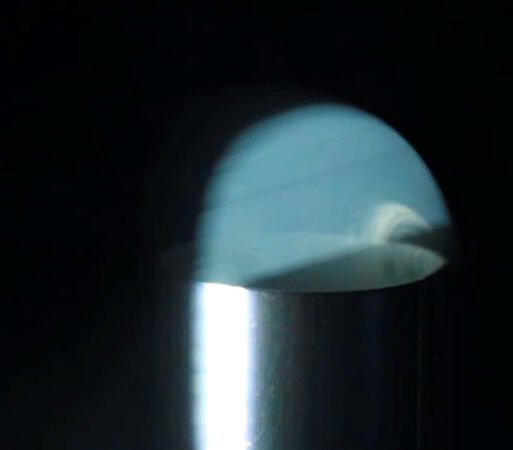Here’s why pipe organs seem to violate a rule of sound
A speck of gold dancing to a pipe organ’s tune has helped solve a long-standing mystery: why certain wind instruments violate a mathematical formula that should describe their sound.
In 1860, physicist Hermann von Helmholtz — famous for his law of the conservation of energy — devised an equation relating the wavelength of a pipe’s fundamental tone (the lowest frequency at which it resonates) to pipe length (SN: 3/31/28). Generally, the longer a pipe is, the lower its fundamental tone will be.
But the equation doesn’t work in practice. A pipe’s fundamental tone always sounds lower than the pipe’s length suggests it should according to Helmholtz’s formula. Fixing this problem requires adding an “end correction” to the equation. In the case of open-ended pipes such as flutes and those of organs, the end correction is 0.6 times the radius of the pipe. Why this was, nobody could figure out.
A break in the case came in 2010. Instrument builder and restorer Bernhardt Edskes of Wohlen, Switzerland was tuning an organ when he spotted a piece of gold that had come loose from a pipe’s gilded lip. Air pumping through the pipe should have carried away the gold. Instead, it seemed to be trapped in a vortex just above the pipe’s upper rim.
Edskes told his friend, physicist Leo van Hemmen of the Technical University of Munich, about the observation. Together with colleagues from Munich and Wageningen University in the Netherlands, they studied how air moves through playing organ pipes using cigarette smoke.
When an organ pipe sounds, a vortex indeed forms over the pipe’s rim, the team reported March 14 in Chicago at a meeting of the American Physical Society. What’s more, this vortex is capped by a hemisphere of resonating air.

© B.H. Edskes et al
This vibrating air cap, van Hemmen says, is the long-sought explanation for the “end correction.” The cap effectively lengthens the organ pipe by the exact amount that must be tacked on to Helmholtz’s formula to explain the pipe’s fundamental tone.
For all the latest Science News Click Here
For the latest news and updates, follow us on Google News.

